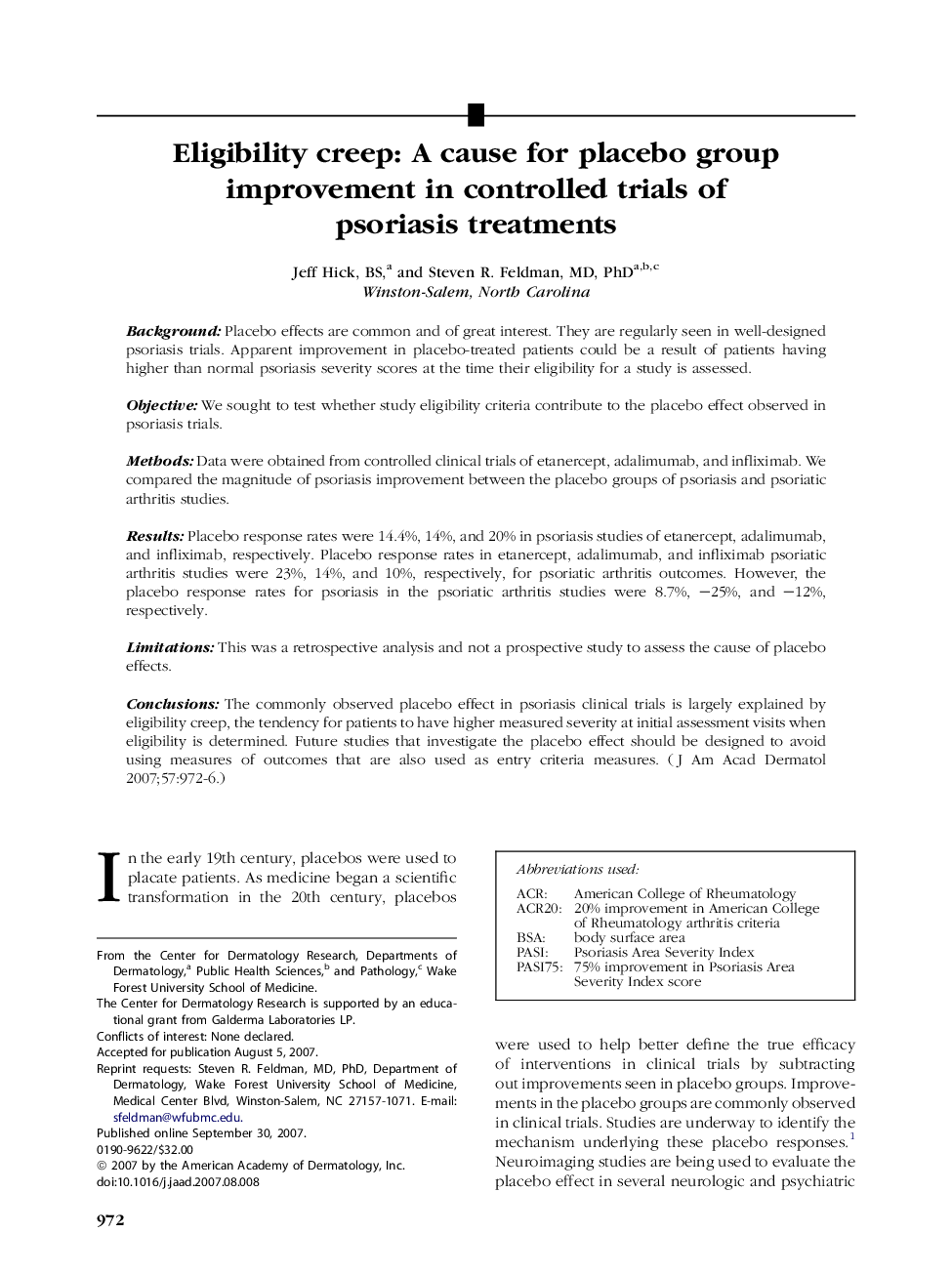| کد مقاله | کد نشریه | سال انتشار | مقاله انگلیسی | نسخه تمام متن |
|---|---|---|---|---|
| 3210067 | 1587633 | 2007 | 5 صفحه PDF | دانلود رایگان |

BackgroundPlacebo effects are common and of great interest. They are regularly seen in well-designed psoriasis trials. Apparent improvement in placebo-treated patients could be a result of patients having higher than normal psoriasis severity scores at the time their eligibility for a study is assessed.ObjectiveWe sought to test whether study eligibility criteria contribute to the placebo effect observed in psoriasis trials.MethodsData were obtained from controlled clinical trials of etanercept, adalimumab, and infliximab. We compared the magnitude of psoriasis improvement between the placebo groups of psoriasis and psoriatic arthritis studies.ResultsPlacebo response rates were 14.4%, 14%, and 20% in psoriasis studies of etanercept, adalimumab, and infliximab, respectively. Placebo response rates in etanercept, adalimumab, and infliximab psoriatic arthritis studies were 23%, 14%, and 10%, respectively, for psoriatic arthritis outcomes. However, the placebo response rates for psoriasis in the psoriatic arthritis studies were 8.7%, –25%, and –12%, respectively.LimitationsThis was a retrospective analysis and not a prospective study to assess the cause of placebo effects.ConclusionsThe commonly observed placebo effect in psoriasis clinical trials is largely explained by eligibility creep, the tendency for patients to have higher measured severity at initial assessment visits when eligibility is determined. Future studies that investigate the placebo effect should be designed to avoid using measures of outcomes that are also used as entry criteria measures.
Journal: Journal of the American Academy of Dermatology - Volume 57, Issue 6, December 2007, Pages 972–976